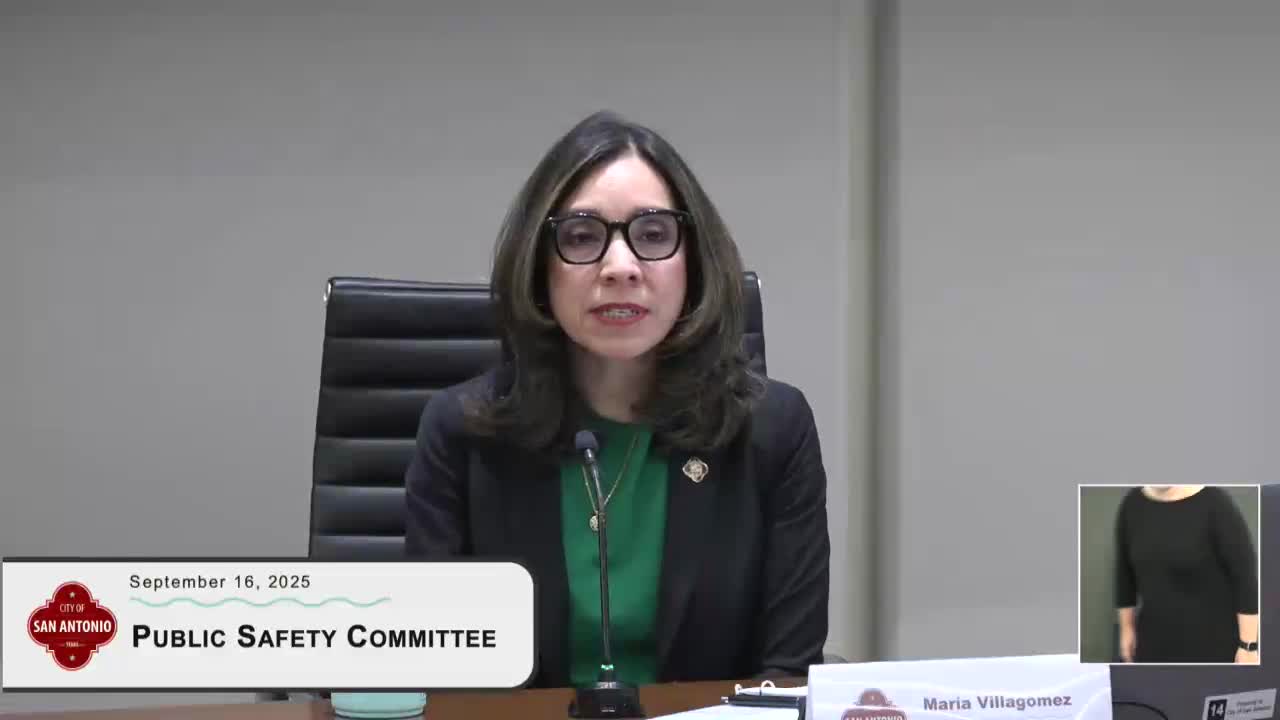Police Chief Solomé updates committee on elder abuse prevention efforts in Texas
September 16, 2025 | San Antonio, Bexar County, Texas
This article was created by AI summarizing key points discussed. AI makes mistakes, so for full details and context, please refer to the video of the full meeting. Please report any errors so we can fix them. Report an error »

The San Antonio Public Safety Committee convened on September 16, 2025, to address critical issues surrounding the abuse of elderly individuals. The meeting featured presentations from key officials, including the Director of Human Services and Chief Salomé from the Police Department, who outlined ongoing efforts to combat elder abuse and improve community awareness.
The session began with an overview of the alarming statistics related to elder abuse in Texas, where approximately 120,000 reports of abuse are filed annually, yet only 1 in 24 cases are reported. This indicates a significant underreporting issue, with many elderly individuals suffering in silence due to fear, shame, or lack of awareness about available resources.
Chief Salomé presented data on various types of crimes against the elderly, highlighting a rise in financial exploitation and credit card fraud. The presentation emphasized that elderly individuals are particularly vulnerable due to isolation and limited access to community resources. Family members were identified as the most common perpetrators of abuse, underscoring the need for targeted intervention strategies.
The committee discussed the importance of training for city employees and caregivers to recognize signs of abuse and provide appropriate support. A pilot training program has already reached 6,900 city employees, with plans to expand this initiative across all city departments. The training focuses on building awareness and equipping staff with the skills necessary to assist elderly victims effectively.
Additionally, the meeting addressed the collaboration between the Police Department and Adult Protective Services (APS) to streamline reporting and investigation processes. The committee aims to enhance community engagement through resource fairs and educational campaigns to empower elderly individuals and their caregivers.
In conclusion, the meeting underscored the commitment of San Antonio's Public Safety Committee to tackle elder abuse through comprehensive training, community outreach, and inter-agency collaboration. The next steps involve expanding training programs and increasing public awareness to ensure the safety and well-being of the elderly population in the community.
The session began with an overview of the alarming statistics related to elder abuse in Texas, where approximately 120,000 reports of abuse are filed annually, yet only 1 in 24 cases are reported. This indicates a significant underreporting issue, with many elderly individuals suffering in silence due to fear, shame, or lack of awareness about available resources.
Chief Salomé presented data on various types of crimes against the elderly, highlighting a rise in financial exploitation and credit card fraud. The presentation emphasized that elderly individuals are particularly vulnerable due to isolation and limited access to community resources. Family members were identified as the most common perpetrators of abuse, underscoring the need for targeted intervention strategies.
The committee discussed the importance of training for city employees and caregivers to recognize signs of abuse and provide appropriate support. A pilot training program has already reached 6,900 city employees, with plans to expand this initiative across all city departments. The training focuses on building awareness and equipping staff with the skills necessary to assist elderly victims effectively.
Additionally, the meeting addressed the collaboration between the Police Department and Adult Protective Services (APS) to streamline reporting and investigation processes. The committee aims to enhance community engagement through resource fairs and educational campaigns to empower elderly individuals and their caregivers.
In conclusion, the meeting underscored the commitment of San Antonio's Public Safety Committee to tackle elder abuse through comprehensive training, community outreach, and inter-agency collaboration. The next steps involve expanding training programs and increasing public awareness to ensure the safety and well-being of the elderly population in the community.
View full meeting
This article is based on a recent meeting—watch the full video and explore the complete transcript for deeper insights into the discussion.
View full meeting
